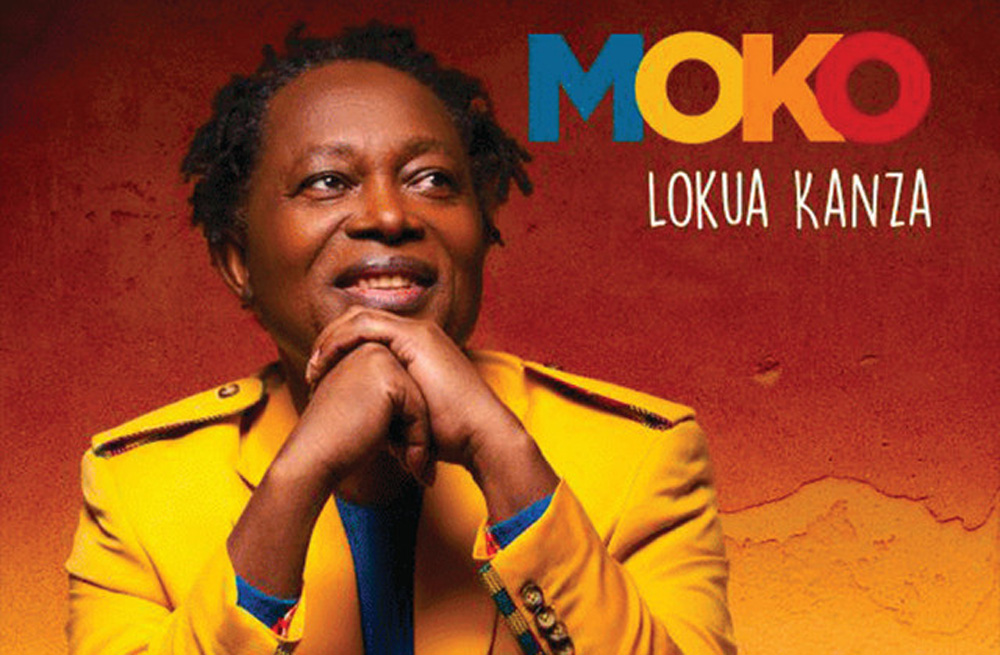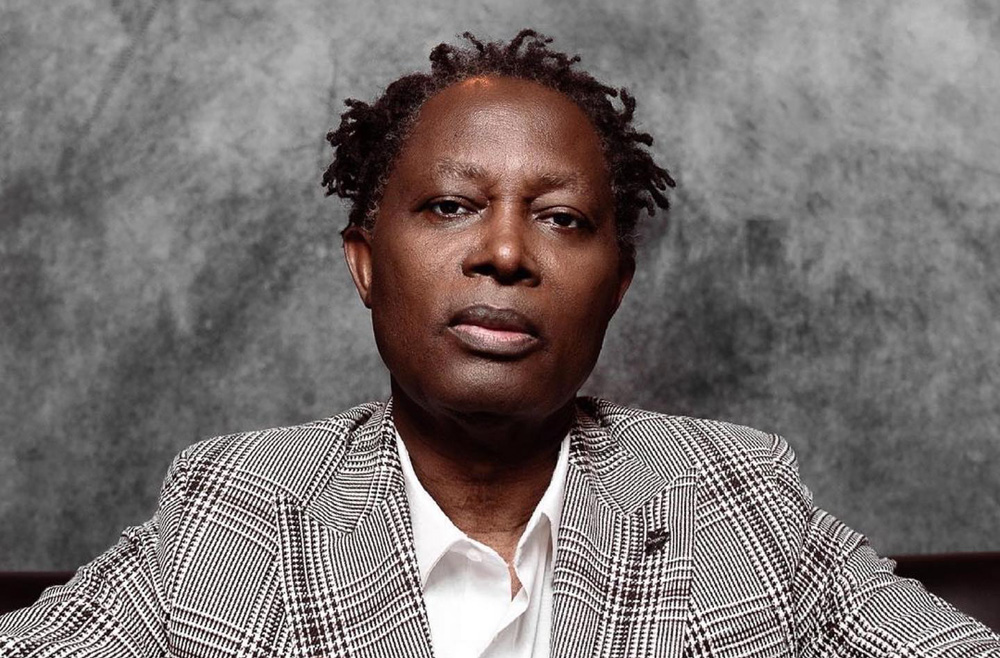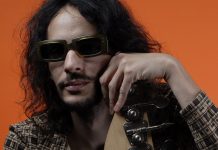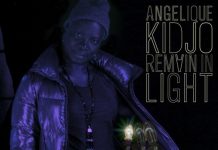Lokua Kanza - Moko (Universal Music Africa, 2021)
Lokua Kanza was born in Bukavu, in the Democratic Republic of the Congo (former Zaire). His father is one of the Mongo people, known for their polyphonic singing, and his mother comes from Rwanda, known for its sophisticated court music.

In Kinshasha he learned to sing in church choirs. To finish his studies he went to the Conservatory at Kinshasa, where he learned music theory, harmony and composition while perfecting his instrumental knowledge.
His decision to become a singer happened after he’d attended one of Miriam Makeba’s concerts, then her friend Ray Lema gave him his first guitar, and he made his first public appearances in some Zairean rumba bands. This was followed by a period of study – music theory and orchestration – at the conservatoire. He was always ready to listen to everything that came his way, from Bach to chanson by way of Rhythm ‘n Blues, pop and bossa nova.
Lokua Kanza became an exceptionally-gifted musician, playing guitars, sanza, percussion, flute, mandolin, bass, piano, and keyboards. Beginning in 1980, he spent the early days of his career along the Gulf of Guinea from Zaire to Ivory Coast, but his talent really came to the fore in the group of the great Zairean singer Abeti Masikini (a.k.a. La Reine Abeti).
In 1984 he left for Paris to take some jazz guitar lessons. He quickly became part of the African community there and accompanied Ray Lema, Papa Wemba, French jazz band Sixun and Manu Dibango.
In October of 1992, Lokua Kanza gave his first major concert in Paris, opening for Angelique Kidjo at the Olympia. Alongside him were two partners who have remained with him ever since: the radiant Julia Sarr (vocals), from Senegal, and his own brother, Didi Ekukuan (bass, vocals, various percussion, talking drum, tambourine, etc.)
Lokua Kanza recorded his first album, Lokua Kanza, during winter 1992/93, and it revealed-a deeply-inhabited universe “I wanted to rediscover the magic of the nights I spent in Kinshasa when I was a child,” he says. With its nostalgic atmospheres, its ethereal, meditative climate, destitution, simplicity, minimal chords, liquid, undulating, the art of Lokua Kanza imposed its highly subtle difference right from the very first hearing.
As early as the end of 1993, the bard became a star. He signed with a major record-company, toured all over the world, opened for Youssou N’Dour (he sings on several titles in the Guide (Wommat) and Patrick Bruel, produced sessions for his friends Papa Wemba and YYoussou N’Dour (in Peter Gabriel’s studios)… and got down to the producing of his second album, Wapi Yo (1995). This was a commercial success. However, the achievements of his third album, titled 3, more modest, didn’t have the same success.
After a three-year “retirement” (not that he was inactive, for he composed continuously), Lokua Kanza returned with Toyebi Te, sung in French, English and Lingala. The musicians featured included Didi, his old comrade, guitarist Sylvain Luc, percussionists Komba Bellow and Greg Bondo, the strings of the Bulgarian Symphony orchestra, his daughter Malaika and a choir made up of his four children. His 2010 album Nkolo includes vocals in Lingala, Portuguese and French.

The album “Moko” was released after an eleven-year break. In his recordings, the musician combines his sense of adventure with musical versatility.
Among the characteristics of this opus, note that it has been recorded in 12 different countries (Democratic Republic of Congo, Senegal, Ivory Coast, Cameroon, South Africa, Nigeria, Hungary, Brazil, USA, India, England, France ); sung in 14 languages, with the help of a hundred musicians, including those of the Budapest Symphony Orchestra conducted by Chris Walden.
Lokua Kanza consecrates, through this work, a powerful and generous vision of the compatibility between various musical essences, but without ever turning away from his function as a troubadour singing love with this immaculate romanticism belonging only to the greatest.
Driven by the fear of going around in circles, of redoing what he has already accomplished, the artist thus innovates by associating mongo rhythm and Mandinka guitar, rumba and mbalax, Brazilian bossa and symphonic majesty, while gathering around him some of his most faithful companions, Ray Lema, Wassis Diop or the late Manu Dibango, with whom he recorded The title “Nobody cares”.
It is at this price, and after 8 years of concentration, that he manages to make us hear the emotions that we all have in common. But also to believe in a utopia, which we all need.
The album is a mix of styles and cultures, as well as the fruit of numerous collaborations.
From the most famous artists to budding talents, from the youngest to the oldest, more than a hundred musicians contributed to the creation of the album. We find there in particular Manu Dibango, Charlotte Dipanda, Amanda Malela, Richard Bona, Guimba, Jean Philippe Rykiel, Ray Lema, Naveen Kumar, Carlo Magno, André Manga, Sola Akingbola, Sir Gant, Paco Sery, Wassis Diop, Etienne Mbappé, Pamela Baketana and many others…
The singer’s quote is well-known, which also applies 100% to this album: !I was told: “your music is made neither for blacks nor for whites. I proved that it was for all humans”.
World Music Central and NMR (foto: press Lokua Kanza)
















